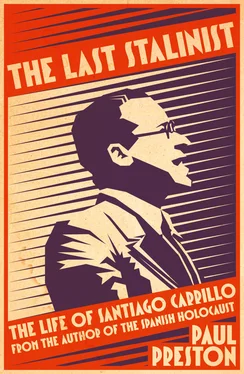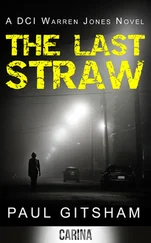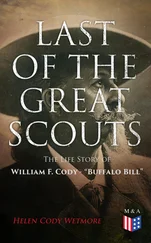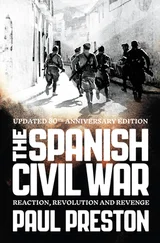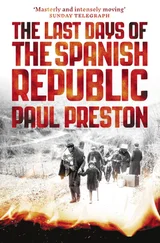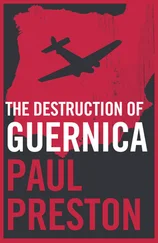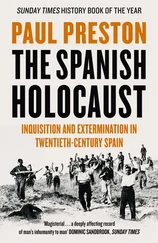1 ...8 9 10 12 13 14 ...30 On 13 December 1933, the UGT’s National Committee discussed the PSOE’s calls for action in response to the deteriorating position of the working class in both rural and urban Spain. Against the calls for calm from Saborit and Trifón Gómez, Carrillo’s ally Amaro del Rosal, the hot-headed president of the Federation of Bank and Stock Exchange Workers, proposed that the UGT join the PSOE in organizing a revolutionary movement to seize power and establish socialism. He was supported by, among others, Carlos Hernández Zancajo, leader of the transport workers. Del Rosal’s proposal was defeated, but further acrimonious debate led to a decision to call an extraordinary congress of the UGT to resolve the bitter divisions between the moderate Besteiristas and the young revolutionary supporters of Largo Caballero. 64When that meeting took place on 31 December, one after another the leaders of the major federations of the UGT – the mineworkers, the textile workers, the bakery workers, the hotel workers, the metalworkers, the bank workers and the transport workers – rose to declare that they supported the line of the PSOE executive and not that of the UGT. They were opposed only by the representatives of the Besteirista strongholds, the printers, the landworkers’ Federación Nacional de Trabajadores de la Tierra (FNTT) and the railwaymen. Amaro del Rosal proposed that the UGT join with the PSOE in organizing ‘a national revolutionary movement to seize power and establish socialism’. When he and Carlos Hernández Zancajo talked of establishing the dictatorship of the proletariat, the proposal was defeated by twenty-eight votes to seventeen. 65
As their mouthpiece Renovación was in constant difficulties with the authorities, receiving fines and, on some days, the entire print-run being seized, Carrillo understandably saw this as a deliberate attempt to destroy the paper economically. As a result, under the headline ‘They are pushing us into clandestinity’, he wrote that, as a revolutionary group, the FJS might have to go underground. Indeed, the FJS began tentatively to organize its own militias. Carrillo’s efforts in this regard were central to what passed for the creation of Socialist militias prior to the general strike of October 1934 in Madrid. Both through the pages of Renovación and via numerous circulars, the FJS issued instructions about the creation of a paramilitary organization. 66
Not fully perceiving the emptiness of Largo Caballero’s rhetoric, Carrillo could legitimately feel that he had full backing for this from the senior party leadership. The PSOE had named a special commission, presided over by Largo Caballero, to examine the practical side of organizing a revolutionary movement and, after another tense meeting on 9 January 1934, the UGT’s National Committee had reluctantly agreed to participate. Largo Caballero then insisted that the PSOE’s policies be submitted to the UGT’s National Committee. This was to meet on 27 January. 67In the meanwhile, on 13 January, the PSOE executive approved a five-point programme of immediate action, drawn up by Largo Caballero himself. This called for (1) the organization of a frankly revolutionary movement; (2) the declaration of such a movement at the right moment, preferably before the enemy could take definitive precautions; (3) contacts to be made between the PSOE and the UGT and any other groups ready to cooperate in the movement; and, in the event of triumph, (4) the PSOE and the UGT, in collaboration with other participants in the revolution, to take political power, and (5) the implementation of a ten-point reform programme drawn up by Prieto. 68
When the UGT’s National Committee met on 27 January to discuss the various projects, against the fierce opposition of Besteiro, the PSOE’s revolutionary project was approved by thirty-three members of the committee. Only Trifón Gómez of the Railway Workers’ Union and Lucio Martínez Gil of the FNTT voted for the executive, which immediately resigned en masse. Two days later, a new UGT executive was elected, with Largo Caballero as secretary general and including some of the most radical members of the FJS: Ricardo Zabalza of the FNTT, Carlos Hernández Zancajo and Amaro del Rosal. On 30 January, the National Committee of the FNTT had also met to debate the revolutionary proposals. An identical situation had arisen within its ranks. The entire executive, all Besteiristas, resigned, and a new committee of young Caballeristas was elected under Zabalza’s presidency. The organizations of the Socialist movement were falling in quick succession to the extremist youth. A meeting of the most influential section within the PSOE, the Agrupación Socialista Madrileña, was packed by young Socialists, who passed a motion of censure against its president, Trifón Gómez, obliging him to resign. He was replaced by supporters of Largo Caballero, with Rafael Henche as president and Julio Álvarez del Vayo as vice-president backed by a group of the most fervent ‘bolshevizers’, including Hernández Zancajo and Santiago Carrillo.
With Largo Caballero now controlling both the UGT and PSOE executives and the FJS in the hands of his most fervent supporters, a joint committee was immediately established to make preparations for a revolutionary movement. It consisted of Juan Simeón Vidarte, Pascual Tomás and Enrique de Francisco for the Socialist Party, Felipe Pretel, José Díaz-Alor and Carlos Hernández Zancajo for the UGT and Santiago Carrillo for the FJS. Carrillo was thrilled and would take the appointment more seriously than most of the others on the committee. It was a remarkable appointment for someone who had only recently had his nineteenth birthday. With his large glasses and chubby, beardless cheeks, he looked even younger. Operating from UGT headquarters in Madrid, the committee contacted the PSOE, UGT and FJS organizations in each province and issued seventy-three instructions for the creation of militias, the acquisition of arms, the establishment of links with sympathetic local units of the army and the Civil Guard and the organization of squads of technicians able to take over the running of basic services. The response from the provinces was deeply discouraging and there is little evidence, apart from the flurry of communications generated by the committee, that any practical action was taken. 69
Since all sections of the Socialist movement were outraged at the perceived injustice of the election results and the rapid dismantling of the few social advances made from 1931 to 1933, a resort to revolutionary verbalism was understandable. However, when it came to organizing real confrontation with the apparatus of the state, despite the Caballeristas’ sweeping conquest of the leadership positions in the PSOE, the UGT and the FJS, there was considerable trepidation. Most union functionaries and militants remained cautious, and even Largo Caballero and his older trade union supporters were far from comfortable with the bolshevizing policies of Carrillo and the other young radicals. Largo Caballero might call for the dissolution of the army and the Civil Guard and for the arming of the workers. 70However, for him and for the older trade unionists, revolutionary threats were little more than that: threats that they had neither the inclination nor the expertise to implement. The young bolshevizers, in contrast, felt an intense exhilaration about the ideas expressed in the pages of Renovación . They too had little idea of how to implement their rhetoric and were thus united with Largo Caballero only in irresponsibility and incompetence.
The provincial sections barely responded to the hopeful missives of the revolutionary committee. That, together with Largo Caballero’s cautious trade union instincts, ensured that, except in the mining districts of Asturias, the activities of the revolutionary committee never went much beyond rhetoric. The committee issued a ‘secret’ instruction that a revolutionary movement would be launched in the event of the CEDA joining the government. Since it was meant to be a warning to the President of the Republic, Alcalá Zamora was told about it and Gil Robles and other leaders of the right were fully aware of its existence. The lack of secrecy and the lack of any link between the chosen ‘revolutionary moment’ and any real working-class struggles effectively gave all the cards to the government. On 3 February, the new UGT executive met to decide whether to try to stop all strike action so that the movement could harness its energies for the projected revolution. Revealingly, it was decided, at the urging of Largo Caballero, that UGT members should not be asked to abstain from strike action in defence of their economic interests. 71Nevertheless, in issue after issue, the FJS gave ever more coverage to the achievements of the Soviet Union while calling for social revolution, armed insurrection and the dictatorship of the proletariat. 72Such indiscreet, not to say strident, revolutionism provided the perfect excuse throughout the spring and summer of 1934 for the government’s uncompromising repression of strikes that were not revolutionary but rather had only limited economic objectives.
Читать дальше
